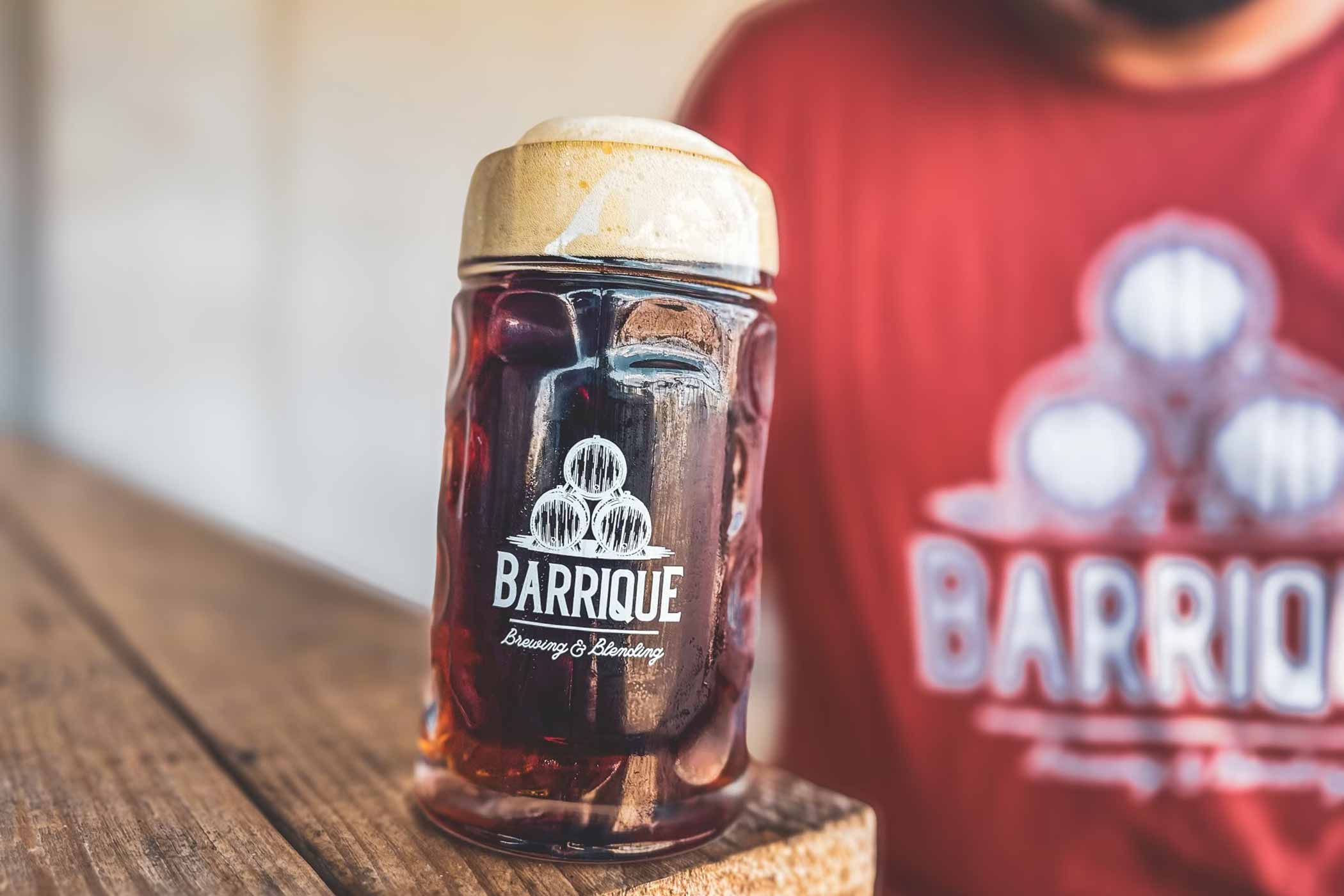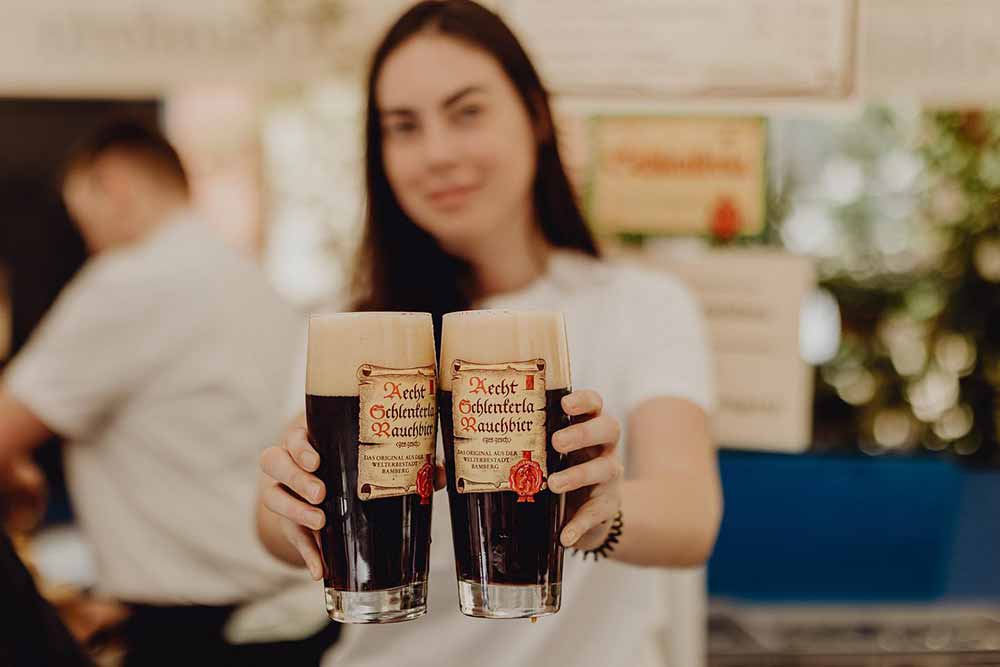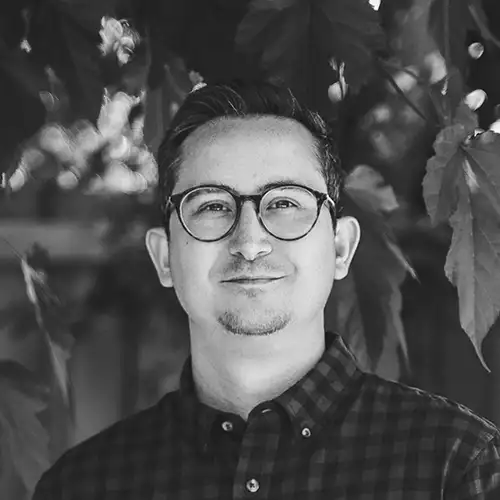Shop
What Is Rauchbier? A Smoky History
Let's clear this up.
Looking for More?
All beer was once smoked beer or rauchbier in German. “It’s a lost knowledge that smoke beer was the original way of making beer,” Sixth Generation “Heller-Bräu” Trum, more commonly known as Schlenkerla, Brewmaster Matthias Trum tells us from his childhood bedroom above the historic smoked beer tavern in Bamberg, Germany.
Today, Schlenkerla is known as one of the quintessential smoked beer breweries, continuing an art bred from history but lost to innovation.
Rauchbier, which literally translates to “smoked beer” in German, gets its distinct campfire-like flavor from drying malt in a kiln fueled most commonly by Beechwood.
The polarizing style has a fascinating, if slightly smoky, history, surviving near extinction thanks partly to Schlenkerla in the Bavarian region of Germany.
Trum, who sits in front of a set of portraits of his entire family line, explains how those before him kept the fires stoked and the tradition alive.
As he tells it, when it comes to rauchbier, we’ve actually been asking the wrong question this entire time.
Ask Not Who Invented Smoked Beer…
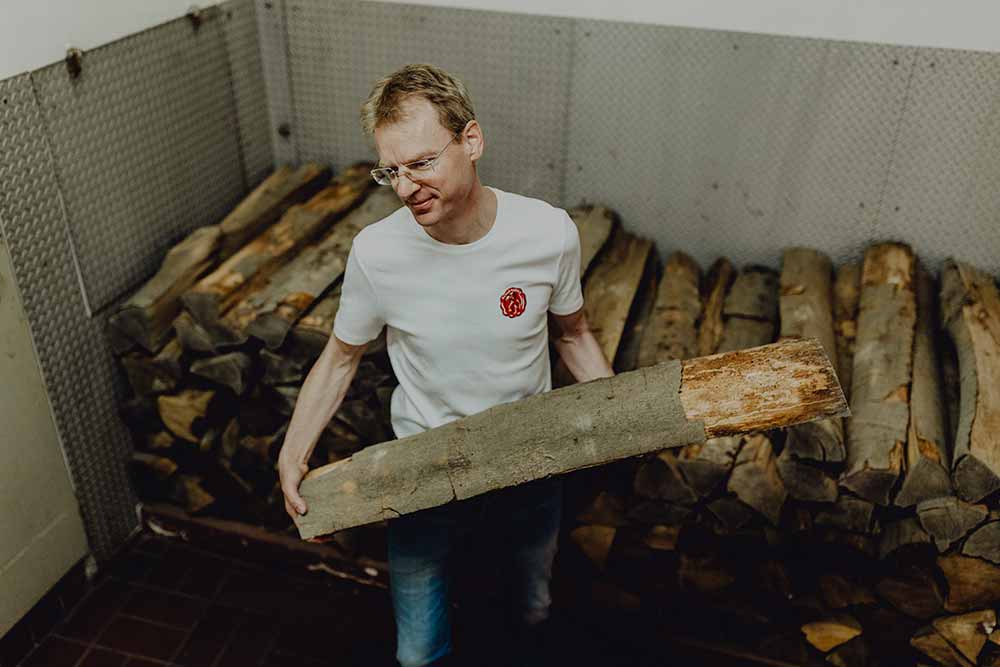
Schlenkerla sixth-generation brewer Matthias Trum | Photography courtesy of Schlenkerla
“The interesting question is not who invented smoked beer,” Trum says wryly. “The interesting question is, who invented non-smoked beer?”
For the majority of beer’s history, all beers were smoked beers.
“When you look at how the ancient civilizations made beer, they probably kilned the malt just out in the open sun,” comments Trum, who has spent years researching smoked beer, finding the oldest fire kilns from the Bronze Age, about 5,000 years ago in today’s Jordan, close to the Dead Sea.
However, a moist climate in Central Europe and Bavaria made drying malt outdoors impractical. Drying over an open fire would have been preferred.
“Two hundred years ago, beers were named winter beer, summer beer, or lager beer. There was no term for smoked beer,” Trum explains. “All the beers were smoky.”
As Dovetail Brewery Brewer and Marketing and Creative Manager Jenny Pfafflin says, “[Rauchbier] is primordial because one of the first things humans learned to use was fire and smoke to preserve food. Quite simply, rauchbier brings you back to that time.”
But in 1635, Cornwall’s Sir Nicholas Halse developed the “smokeless” kiln. Bypassing wood as a fuel source, the invention made it easier and faster to kiln malt.
When Halse received a patent for the non-smoke kiln on July 23, 1635, smoked beer immediately started to disappear. Trum says it took less than a century for breweries in England to stop using smoke kilns. By around 1800, German breweries had adopted the new technology, too.
“The first one to dismantle the Bavarian kiln, meaning smoke kiln, was the Spaten Brewery in Munich, run by Gabriel Sedlmayr, the elder,” Trum explains. “He replaced it with … as they called it, the English kiln. So even in Germany, the modern-type kiln had the name England in it because it was so synonymous with that invention of Sir Nicholas Halse.”
By the turn of the twentieth century, only four breweries still used smoked malt, and today, Schlenkerla and one other Bamberg brewery, Spezial, remain the only producers of traditional smoked beer.
If the rest of the country gave up on smoked beer, why didn’t Bamberg?
Preservation, Practicality, and a Pint of Stubbornness
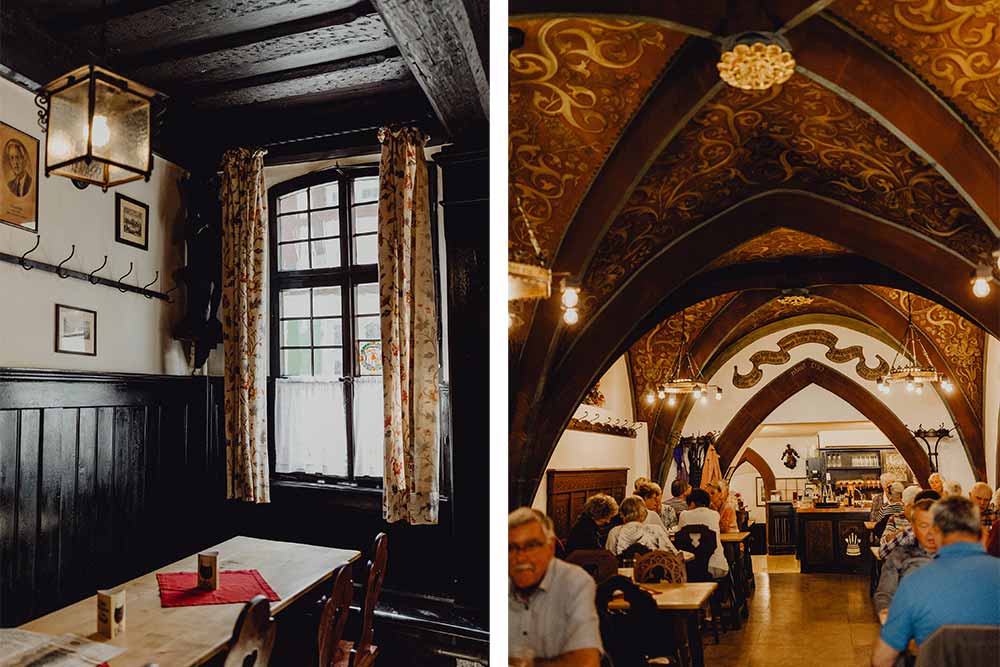
Photography courtesy of Schlenkerla
To the west of Bamberg lies Germany’s largest Beechwood forest. A core component of rauchbier, Beechwood isn’t found everywhere.
In a rural area of Northern Bavaria, Bamberg had the easiest access to one of smoked beer’s main ingredients.
Moreover, Bamberg’s strict religious association affected the town.
Trum explains that until 1804, the church ran Bamberg. “Like the state of the Vatican in Rome,” he says. “That setup, of course, helps conserve traditions or prevents the introduction of modern things.”
During the 1900s, a typical day in Bamberg consisted of two things: church and beer.
An old city council member elaborates in a news article that Trum tracked down from 1898. “He said, we start very early in the morning with morning Mass and prayer. After that, we go to our favorite tavern, which in our case is Schlenkerla,” says Trum. “We have our morning pint, and then we go for a walk, and then we go to the beer garden, have another beer there, and in the evening, we come back to Schlenkerla, to the Stammtisch (which translates to ‘the regulars’ table’). Every day, the same itinerary.”
Perhaps a touch stubborn and conservative, Bamberg simply refused to modernize—content with smoked beer.
And Schlenkerla is content to preserve it.
So What Exactly Is Rauchbier? And How Is It Made?
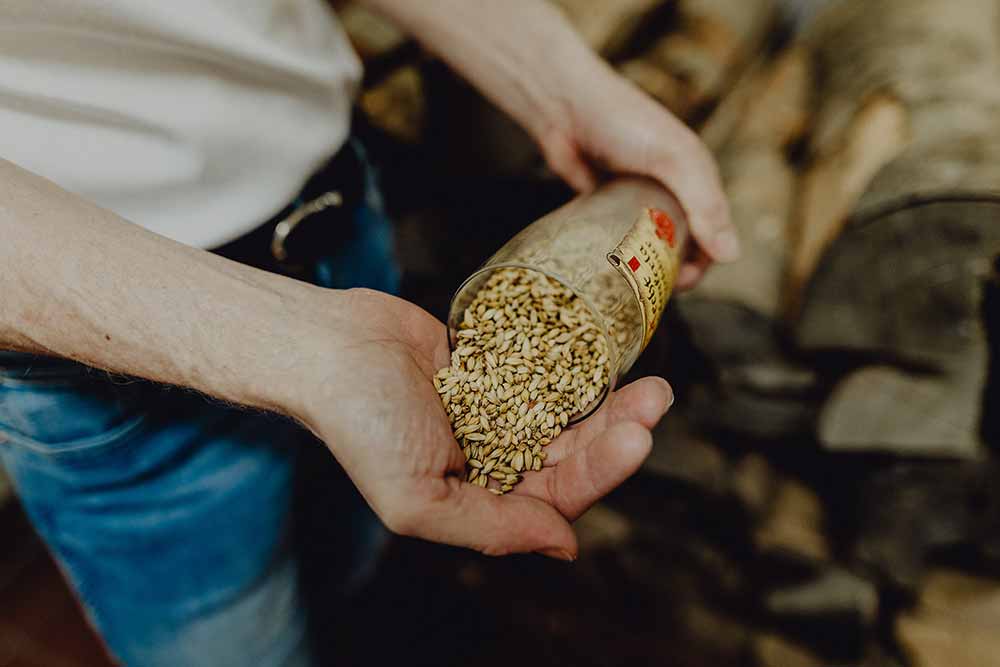
Photography courtesy of Schlenkerla
That’s more like the question you should be asking.
“In its simplest form, it’s a beer with smoke present,” explains Spencer Longhurst, head brewer at Barrique Brewing and Blending, who started making rauchbier seasonally in the fall of 2020.
Longhurst, who actually first got a taste of smoked beer through a peat-smoked beer from Yeasty Boys in New Zealand, says that brewing this style revolves around how you prepare the malt.
Let’s take arguably the most classic example of the style, Aecht Schlenkerla Rauchbier – Märzen. A dark, aromatic, bottom-fermented 5.1% ABV lager—essentially a smoked Märzen—brewed with Original Schlenkerla Smokemalt, this rauchbier all starts with the steeping process. “We have a stainless steel basin in which the grain, the barley, is put inside,” explains Trum. “It soaks in the water for roughly a day intermittently with air so that the grain doesn’t suffocate.”
Afterward, the grain spends roughly a week in germination boxes.
The secret of Schlenkerla’s smoked beer lies in the next step—the kilning process.
For twenty-four hours, the brewery places grain into a closed kiln with an open fireplace underneath. As the malt dries, the smoke from the Beechwood logs infuses flavor.
“The classic Märzen smoke beer is made with (basically) one hundred percent smoked malt and a tiny bit of roast malt to fill out the color differences between malt batches,” says Trum, “because obviously with an open fire, you cannot adjust the color as exactly as in a modern kiln.”
Dovetail stays close to those percentages with ninety-five percent Beechwood smoked malt and a little chocolate malt. “People are usually shocked to find that much smoked malt,” says Pfafflin.
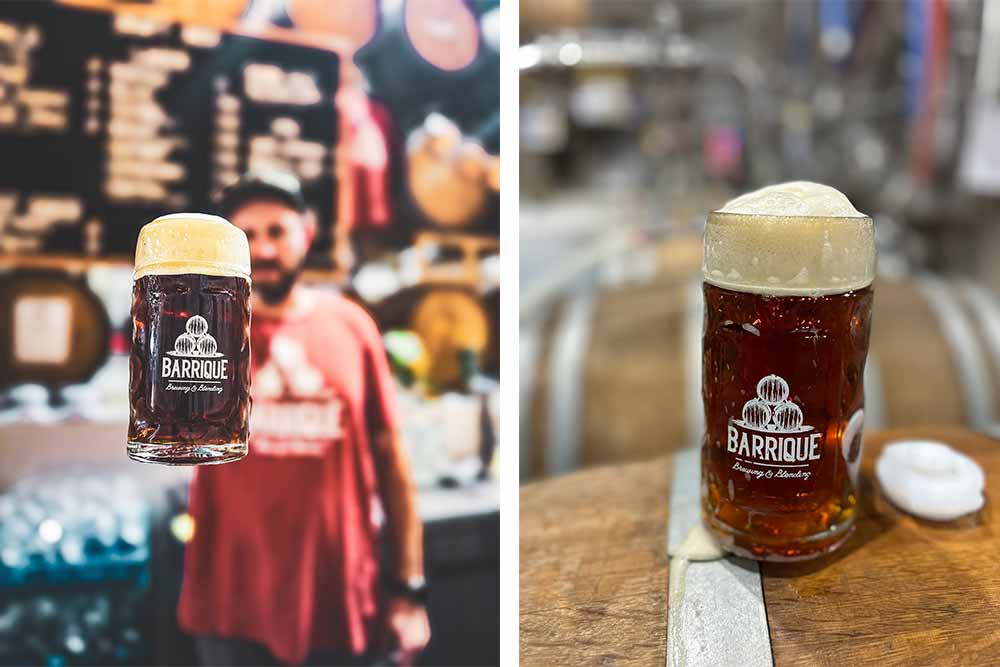
Photography courtesy of Warren Bondi | Beer Marketeers
At Barrique, Longhurst dials it back a bit. He uses forty-three percent of Weyermann’s smoked Beechwood malt before adding Munich I and Munich II and a tiny bit of chocolate malt just for color adjustment.
While brewing, Schlenkerla uses a decoction mash to emphasize the malt’s unique notes. “By boiling the mash, you add additional flavors, and you get a more intense and more bread-like aroma in the beer,” explains Trum.
Similarly, Pfafflin says at Dovetail, they do a double decoction to “throttle up that maltiness, which balances out the smoke.”
Brewing Schlenkerla’s classic Märzen takes approximately eight hours, meaning they can only produce three batches daily. Trum says that he has fully automated the brew house to improve efficiency. However, he notes that the mash tun and lauter tun are still made of classic copper and configured using natural gravity to help transfer the wort.
After fermentation, the rauchbier matures in stainless steel lagering vessels (wooden barrels back in the day!) in the rock cellars.
The classic Märzen smoked beer lagers for two months, which is relatively lengthy. Beginning at a natural cave temperature of eight degrees Celsius, Aecht Schlenkerla Rauchbier ends at approximately one degree Celsius for optimal turbidity clearance and protein stability, as Trum prefers to avoid filters. Additionally, the lagering time allows the beer to develop its flavor fully.
Is Rauchbier Polarizing or Popular?
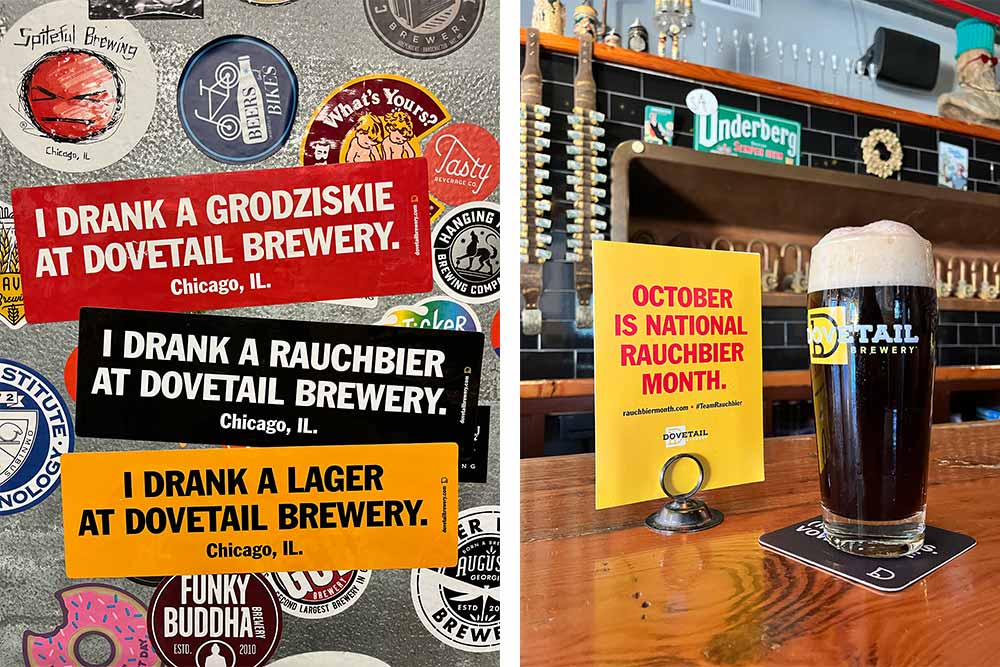
Photography courtesy of Jenny Pfafflin | Dovetail Brewery
It depends on who you ask. Not everyone finds smoke pleasing in their pint. Much like pumpkin beers, rauchbiers have distinct camps of “yaysayers” and naysayers.
“There’s an old Bamberg proverb that, when you drink smoked beer … you have to drink three pints to fully appreciate the aroma and flavor,” says Trum.
Rauchbier can be a jarring jolt to the palate.
“I don’t think people are ready for it when it’s served to them the first time,” says John Holl, editor of All About Beer and founder of a podcast and Facebook Group called This Week in Rauchbier.
Holl says smoked beer first curled its tendrils around him seventeen years ago during the Great American Beer Festival when he tried an Alaskan Smoked Porter paired with some smoked salmon. “I remember standing in that room being in awe of this pairing,” he recalls. “That chocolatey, roasty, smoked goodness. Just realizing how special that beer was, that was an aha moment for me.”
But Holl notes that it can be confusing if you don’t call out the “smoke” in the beer’s name or on the label. “If you’re going with the traditional German [rauchbier], people are not ready for something that is as assertive, abrasive, just shocking full-on smoked malt shock of a campfire coming through the beer,” he says.
Which is why Trum advocates drinking rauchbier right from the source—a wooden barrel at Schlenkerla’s tavern in Bamberg.
“The carbonation in the wooden barrel is a little bit lower, and it’s more mellow in that flavor. It’s the freshest you can have,” he says. “And the smokiness from the wooden barrel actually is a little bit less because of all the freshness and the lower acidity.”
Trum says many people have told him they don’t enjoy Aecht Schlenkerla Rauchbier when they first try it from the bottle. “Once they had it from the wooden barrel, they said, ‘Oh! This is much better,’” explains Trum. “Those people out there who don’t like smoked beer, you should try it from the wooden barrel. If you still don’t like it, okay, it’s not your thing, but give it a chance.”
Holl agrees with the Bamberg proverb, saying, “You should never judge your love of rauchbier on your first experience; give it four, five, or six to really try different ones to see what lands on your palate.”
Though he cautions, “If you don’t love barbecue, if you don’t like the smell of campfire … it might not be for you, and that’s totally fine!”
On the other hand, those who love rauchbier…L-O-V-E rauchbier.
Holl says This Week in Rauchbier “started as a joke, and that’s not a lie!”
While hanging out and recording a podcast with Dovetail Co-Founders Bill Wesselink and Hagen Dost and drinking a couple of the brewery’s rauchbiers, they questioned why a show all about rauchbier didn’t exist.
After the podcast ran, Holl says he started getting “fives of emails” asking when the rauchbier podcast was coming out.
For April Fool’s Day in 2020, Holl launched This Week in Rauchbier as a podcast and later a Facebook group, which now has 2.2k fans.
“It’s this online community of beer misfits who have an appreciation of the style,” says Holl. “It’s just this good-feeling corner of the beer internet where people are excited about smoked beers and the traditions and the innovation.”
He adds, “If you know, you know, and we’re not hiding it from anybody.”
But even an island of misfit beer drinkers can’t reasonably sustain rauchbier in the States.
The running joke, as Holl tells it, is that if a brewery puts a rauchbier on, “Tens of people will be thrilled, and you’ll make fives of dollars off the sales of the beer!” he laughs. “Sorry, I can’t make it to the brewery for the next six months, but I know it’ll be on when I get there.”
Longhurst says Barrique’s Rauchbier is actually a good seller in the tasting room, where it has a captive audience, but it’s a little slower in distribution.
For Holl, finding a rauchbier like Dovetail’s or Barrique’s is exciting. “When you go into a brewery and there is a rauchbier on, it shows me they are thinking outside the consumer norms and trying something different,” he says. “That’s part of the charm of [rauchbier].”
Does Rauchbier Taste Better in the Fall?

Photography courtesy of Jenny Pfafflin | Dovetail Brewery
Those willing to try rauchbier, though, can expect a kaleidoscope of flavors.
“The first sip is intense, layered, and there’s a lot to ponder and think about when drinking it,” says Hop Culture Contributor Ryan Pachmayer, who traveled to Bavaria last year and put together this handy guide for us on the Franconia region. “It’s rich, toasty, meaty, subtly sweet, and, of course, smoky—kind of like a toasty campfire caramel cookie.” As the beer changes with temperature, new flavors arise, with some even saying this beer tastes like savory, smoked bacon.
In the States, many rauchbiers appear in the fall, where one might associate these flavors above with Oktoberfest celebrations.
At Barrique, Longhurst only brews rauchbier in autumn to pair alongside the brewery’s Märzen, Festbier, and Oktoberfest celebrations. “Rauchbier has been a mainstay [in the fall],” he says, adding that since Nashville is so hot over the summer, “September just feels right and seems to work better as far as what customers order.”
Somewhat unique, Dovetail tries to brew its rauchbier year-round. In fact, the brewery actually opened with only three beers on the menu—rauchbier was one of them.
“The first keg invoice was a rauchbier sold to one of the bars up the street,” laughs Pfafflin. “We love smoked beer around here.”
Love or hate it, rauchbier’s taste isn’t the only thing polarizing about the style.
Strike up a conversation with industry folks and consumers alike, and you’ll probably hear several different pronunciations of rauchbier.
Everything from rock-bier to rawsch-bier.
Trum says that, for the correct pronunciation, “you need that guttural -CH sound.” Without it, the word in German changes meaning from smoke to drunk. “So that would be a drunk beer!” laughs Trum.
I did my best to nail that hard -CH through our conversation, but admittedly, it didn’t come easy.
“As we battle with the -TH and -B [in English], you battle with our -CH,” admits Trum.
What Is the Future of Smoked Beer?
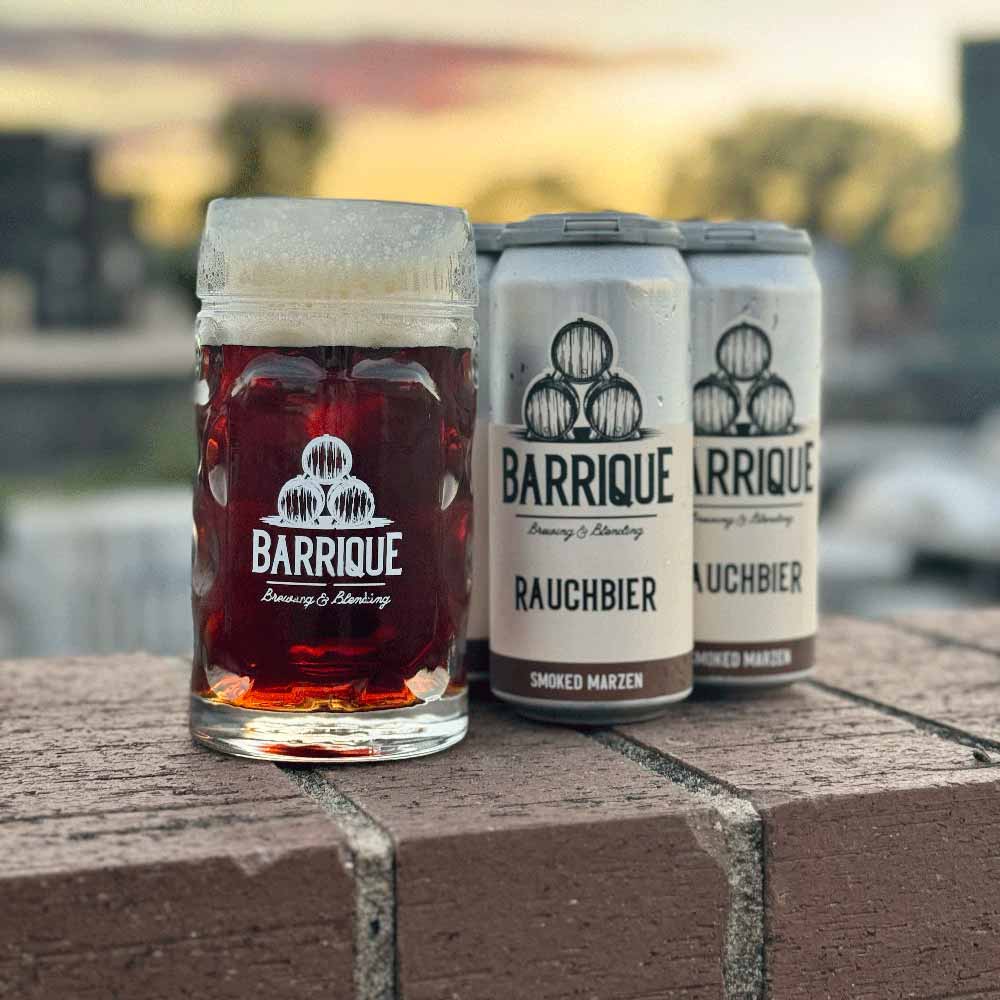
Photography courtesy of Warren Bondi | Beer Marketeers
A little hazy? Just kidding. It’s actually pretty clear.
Rauchbier will never be as popular as hazy IPAs, but there is a corner of the world, the country, and the market for those who love a little bit of bacon or campfire in their glass.
All beer started as smoked beer. Now, only a small percentage of beer is smoked beer, but the preservation of the style and history live on, especially at places like Schlenklera.
”When you sit on a chair which has been around for 100 years, the table 150 years, and the room around you is 500 years old,” Trum emphasizes, and drink an Aecht Schlenkerla Rauchbier right from the wooden barrel, well, that will never get old.
For those who love it, like Longhurst, rauchbier has become a bit of an obsession. He’s turning forty in April and planning a special trip to Bamberg just to try smoked beer from the source.
Pfafflin would love to do the same. She says visiting Bamberg (or, as one of Dovetail’s owners calls it, “The Disneyland of beer,” explains Pfafflin) is high on her list.
At home, Longhurst says nothing is going to change. “I’m definitely going to make this beer every fall.”
And as much as possible, Dovetail will keep its rauchbier on as long as they can brew it.
Of course, Schlenkerla hasn’t changed things for hundreds of years. Rauchbier is alive and well, and sometimes, at the end of the day, that’s the only explanation you need.
“Why do we find rauchbier so delicious?” Pfafflin says she often asks herself. “It’s just one of those things that is what it is. Maybe we don’t need an answer. We just know it’s going to be delicious.”
Hop Culture’s 5 Favorite Rauchbiers to Try Right Now
Aecht Schlenkerla Rauchbier – Märzen – Schlenkerla (“Heller-Bräu” Trum)
Bamberg, Bayern, Germany
One of the most classic interpretations of the style still alive today, Aecht Schlenkerla Rauchbier has to be at the top of your must-try rauchbier list.
And while drinking straight from the gravity-fed wooden cask at Schlenkerla’s tavern in Bamberg would be best, we understand that’s not always possible.
You can find this beer distributed pretty widely throughout the United States.
But maybe consider planning a trip for next year…I know we are. 😉
Rauchbier – Dovetail Brewery
Chicago, IL
Brewed year-round, Dovetail’s Rauchbier is a revelation and probably one of our favorite versions made Stateside.
“For me, it’s a chocolate bar with the smoke in the beer with a sea salt flavor,” explains Pfafflin. “It’s savory sweet but not a sweet beer because it has a lot of bread crust.”
Pfafflin says that while the smoke does dominate, they also hop with Tettanang in a way that balances the smokiness.
“We do a coolship addition as well as hot-side hopping, so you’re getting more of an herbally hop character,” she explains. “It’s the herbalism and hoppiness that helps balance the beer, the smoke, and the malt.”
Rauchbier – Barrique Brewing and Blending
Nashville, TN
To make Barrique’s Rauchbier, Longhurst typically starts with forty-three percent of Weyermann’s smoked Beechwood malt before adding Munich I and Munich II and a tiny bit of chocolate malt just for color adjustment.
“I work everything backward from there,” he shares. Since he tries to keep Barrique’s version style-specific, in this case, a Märzen, Longhurst isn’t looking for a defined hop character.
“Just enough bitterness to balance some of the sweetness and the malt depth,” he explains. Barrique uses German Tradition through two additions. “At first wort and one with thirty minutes remaining in the boil for 18.5 IBUs,” says Longhurst. “Not a great deal of consideration in the hops; it’s just to balance.”
Longhurst then lagers the rauchbier for nine weeks. “It’s about two weeks in the primary fermenter and then about six to seven weeks lagering and packaging,” he says.
The result speaks for itself. Longhurst cracked one on our call.
He described the beer as pouring a deep, dark amber with an aroma like “a gentle campfire, almost hammy. I don’t want to say barbecue … but maybe more like Black Forest ham.”
The sweet, smoky aromatics carry through to the sip fivefold. “It’s definitely a lot more smoky on the palate than the aroma,” says Longhurst. “It’s got that bread, multigrain complexity, and then you swallow, and you get this drying smoke effect.”
He adds, “It’s a cool beer.”
Seems like people agree. This beer ranks ninth on Untappd’s list of all-time top-rated rauchbiers.
Schatzi – Schilling Beer Co.
Littleton, NH
While Holl loves Schilling’s smoked Baltic porter called Foeder-Lagered Rügen, “that was really really good,” he says, it’s actually the brewery’s collab with Bissell Brothers that ranks highly on Untappd’s list of all-time top-rated rauchbiers.
Featuring maple-smoked wood from Blue Ox Malt House, Schatzi has “an alluring, rich, smokey character,” according to Schilling. “Pouring a dark amber color, notes of baked rye bread, toasted walnuts, and ever-present smokiness give way to a kiss of oak from time in our foeder.”
Lost in the Dream – Notch Brewing
Salem, MA
Actually considered a helles rauchbier, Lost in the Dream takes the lager brewery’s Helles Lagerbier recipe but adds Bamberg rauchmalt in the grain bill.
“In other words, barley malt that has been dried with Beechwood smoke,” writes Notch. “It imparts a wonderful aroma of Beechwood rauchmalt along with the classic Helles grapiness. The flavor is bright and clean, with a subtle smokiness and sweetness in the finish.”

